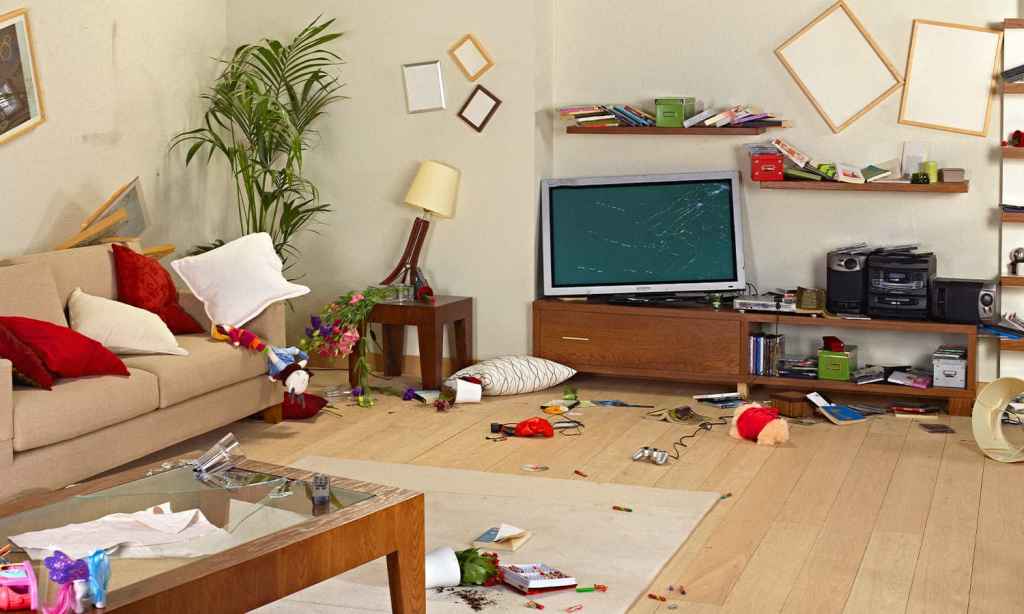Virtual reality has been around for a while now and, by the looks of things, will become an increasingly important part of our lives as tech billionaires work to bond our collective consciousness with the internet.
From the start, there have been questions over whether or not we, as a species, are ready for such mind-altering challenges to our daily lives. Will humans devolve into a kind of Wall-E type living situation, floating around on robotic armchairs while hooked into a wondrous alternative reality? What does it mean if we can exist virtually in a world that is much more entertaining than our own? Will Snoop Dogg make a good virtual neighbour?
It turns out though that many of those deeper philosophical questions may well be better off being sidelined for the moment as we simply come to grips with this new mixed reality. The real question we should be asking here is ‘how can we stop breaking stuff in virtual reality?’
By this, we don’t mean breaking things intentionally, like the virtual Smash Party game where you whack on a headset and whack digital stuff around. We mean actually physically breaking things in our own homes that we don’t mean to.
This all comes about because new data from the UK insurance company Avira shows there has been a 31% increase in home insurance claims from people who have broken things while using VR headsets in the last year. This adds up to an overall increase in this kind of damage of 68% since 2016.
“As new games and gadgets become popular, we often see this playing through in the claims made by our customers,” said Kelly Whittington, Aviva’s UK property claims director.
“In the past, we’ve seen similar trends involving consoles with handsets, fitness games and even the likes of rogue fidget spinners.”
Avira report that the average cost for these VR-related claims in 2021 was around $1,200, generally for smashed TVs that overly enthusiastic gamers have punched their way through.
While the data comes from the UK, we can assume that the rise in VR use in Australia, driven in no small part by the pandemic, has probably caused similar woes here down under.
This trend isn’t exactly new though, as the data going back six years indicates. This article from Mashable, written in 2016 as the VR-trend was initially kicking off, details how exactly to avoid smashing up your belongings, fixtures, and family members while engrossed in their virtual experience.
In fact, there’s already a whole subsection of the internet dedicated to the kinds of hilarious #fails that make VR look really, really dumb and not something any serious person would invest time in.
Reddit has a dedicated sub-Reddit called ‘VR to ER’ which is full of people documenting their injuries sustained while playing VR games. Mainly these are minor cuts and scrapes, but there are reports of people who have dislocated joints and even broken their necks while using VR headsets. That’s a less than hilarious outcome, and thankfully no one has died while using these things, but it appears that a busted hand or lamp may simply be the cost of using virtual reality for many.
Perhaps this aversion to looking like an idiot and dealing with cumbersome wearable technology is part of the reason why Facebook has seen a massive drop in its share price of late. The parent company’s wholesale investment in the metaverse and this new virtual life it plans for us plebs is just not something that many people seem to genuinely want to be a part of.
Still, VR companies like Oculus, which Meta now owns, have been building safety parameters into their equipment since day one. When configuring your VR gear, users set physical boundaries for how far they can travel in their homes without running into things and it appears that many of the issues seen are the result of people setting these boundaries far too close to things they don’t want to hit.
Giving yourself a bit of extra leeway here is a good idea if you want to avoid taking a rogue ceiling fan to the head – although for some people, being so engrossed in the game that they launch themselves into far away objects appears to not be an easy issue to overcome and, frankly, we hope it stays that way. If we can’t/won’t join the VR hype train, at least we can derive enjoyment from those who do.
Read more stories from The Latch and subscribe to our email newsletter.







